How Are Premium Rigid Boxes Manufactured in 2025?
Struggling with outdated packaging methods? Slow, costly production hurting your brand? Learn how advanced automation makes premium rigid boxes efficiently in 2025.
In 2025, premium rigid boxes are manufactured using highly automated rigid boxes machines. These systems handle paper feeding, gluing, precise positioning with AI cameras, board placement, corner taping, forming, and wrapping, ensuring high quality and efficiency.1
That gives you the quick answer. But there’s more to understand about these impressive boxes and the machines that create them. We work with these machines every day at Kylin Machine. Let’s look closer at what goes into making them, why they cost what they do, and their environmental impact.
What Materials Go Into Making a Rigid Box?
Wondering what gives rigid boxes their sturdy feel? Choosing the wrong materials can compromise quality. Let’s break down the essential components used in their construction.
Rigid boxes primarily use a thick greyboard or chipboard core for strength. This core is then covered with a wrap material. Common wraps include specialty paper, printed paper, fabric, or leatherette. Glue holds the layers together securely.
!
Understanding the materials is key to appreciating rigid box quality. The manufacturing process, often using machines like our Kylin models231, precisely handles these different components.
The Core Structure
The heart of a rigid box is its structural board, usually greyboard or chipboard. This is not flimsy cardboard; it is dense, non-bending paperboard. Its thickness determines the box’s rigidity and protection level. We see thicknesses ranging significantly based on the required strength for different products. Selecting the right board is the first step.
Wrapping Options
The wrap covers the greyboard. It provides the visual appeal and branding surface. This is where customization really shines. Options range from simple colored paper to complex embossed or foil-stamped designs. You can also use fabrics like linen, or even high-quality faux leather. The choice impacts the box’s final look, feel, and perceived value.
The Binding Agent
Strong adhesives are crucial for a clean finish. Glues, often hot-melt or cold glues, are applied precisely by automated machines1. This ensures the wrap bonds smoothly to the greyboard without wrinkles or bubbles. The type of glue depends on the wrap material and the desired production speed.
| Material Type | Purpose | Common Examples |
|---|---|---|
| Core Board | Provides structure, rigidity | Greyboard, Chipboard |
| Wrap | Aesthetics, Branding | Art paper, Kraft paper, Fabric, PU |
| Adhesive | Binds layers together | Hot melt glue, Cold glue |
What Makes the Materials in Luxury Boxes Special?
Curious about what materials make a rigid box truly luxurious? Standard materials might not impress high-end customers. Learn about the premium choices that define luxury packaging appeal.
Luxury boxes use superior materials: denser greyboard, premium wraps like textured paper, soft-touch finishes, fabrics (silk, velvet), or even leatherette/wood veneers. High-end printing, foiling, embossing, and specialized closures also contribute to the luxurious feel and appearance.
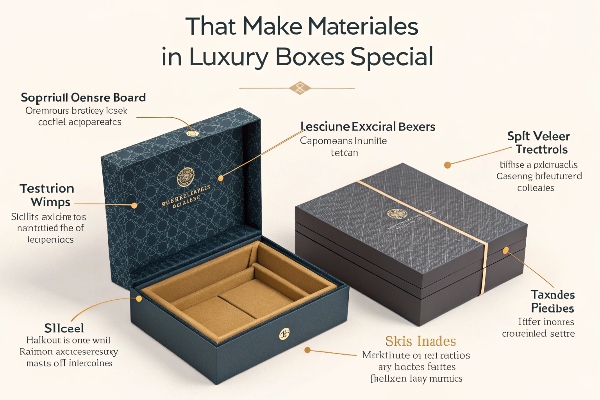
Creating a luxury rigid box goes beyond the basics. It’s about selecting materials and finishes that communicate quality and exclusivity. Our advanced Kylin machines1 are designed for the precision needed for these high-end products. I remember working with a client who wanted a unique feel for their watch boxes; the right soft-touch paper made all the difference. [Personal Story Placeholder: Specific client example about material choice].
Upgraded Core and Wraps
While the basic structure involves a greyboard core, luxury boxes often use thicker, denser board. This gives a more substantial, premium feel in the hand. The real difference often lies in the wrap. Think beyond standard paper: deeply textured papers, metallic foils, soft-touch laminates that feel like velvet, genuine fabrics like silk, or high-quality leatherette are common choices. These materials drastically elevate the tactile and visual experience for the customer.
Finishing Touches
Luxury is often conveyed through details. Techniques like spot UV Varnish (making specific areas glossy), intricate foil stamping (using gold, silver, or holographic foils), deep embossing or debossing (creating raised or indented designs), and high-resolution printing add layers of sophistication. These require precise application. Modern machinery, especially systems with accurate positioning like our AI camera spotters1, excels at this.
Structural Enhancements
Luxury boxes might also incorporate features beyond basic construction. Magnetic closures provide a satisfying snap when closing. Custom-fitted inserts, perhaps made of foam or lined with satin, hold products securely and elegantly. Ribbon pulls can add an element of ceremony to opening the box. These features add complexity to manufacturing but significantly boost the perceived value.
Why Do Premium Rigid Boxes Cost More?
Finding rigid boxes pricier than other packaging options? Not knowing why makes budget planning tough. Let’s explore the key cost drivers behind premium rigid box manufacturing.
Rigid boxes cost more due to several factors. These include higher-quality, thicker materials, complex multi-step manufacturing processes, the need for specialized machinery231, potentially more manual labor or advanced automation, and intricate finishing options compared to simpler packaging types.

The premium price of rigid boxes reflects the value and quality they deliver. Several elements contribute to this cost. Investing in efficient machinery, like the solutions we offer at Kylin Machine, helps manage these costs over the long term, improving ROI for our customers4.
Material Quality Costs
As we’ve discussed, rigid boxes use substantial greyboard and often premium wrap materials. These materials simply cost more per square meter than the thinner paperboard used for folding cartons or the fluting and liners of corrugated boxes. Luxury finishes like foils or special laminates add further material expense.
Manufacturing Complexity
Making a rigid box involves multiple distinct steps. These include cutting the board, grooving it for sharp, clean edges, applying tape to reinforce corners, gluing the wrap paper, accurately positioning the board onto the glued wrap, wrapping the paper around the board, neatly folding the edges, and sometimes adding components like inserts or closures. Each step demands precision. This can be achieved through skilled manual labor or advanced automated lines like our Ky-430A or Ky-500 models231. Automation requires significant capital investment in machinery.
Customization and Volume
Setup times for specific box sizes and designs can be considerable on manufacturing lines. If a company needs only a small production run, these setup costs are spread over fewer units, which increases the per-box price. Highly customized designs or intricate features also add to the time required for labor or machine operation.
| Cost Factor | Description | Impact on Price |
|---|---|---|
| Materials | Thicker board, premium wraps, finishes | High |
| Process Complexity | Multi-step production, precision required | High |
| Machinery/Labor | Specialized equipment investment or skilled labor | High |
| Setup & Customization | Time for changeovers, unique design elements | Medium to High |
| Production Volume | Lower volume runs increase per-unit cost | Medium |
Can Rigid Boxes Be Environmentally Friendly?
Concerned about the environmental footprint of rigid boxes? Unsustainable choices can hurt your brand’s reputation. Let’s explore the options for making rigid boxes more eco-friendly.
Yes, rigid boxes can be sustainable. This depends on material choices like recycled greyboard and FSC-certified wrap papers. Using soy-based inks and eco-glues helps. Designing for easy recycling or promoting box reuse also boosts their green credentials.
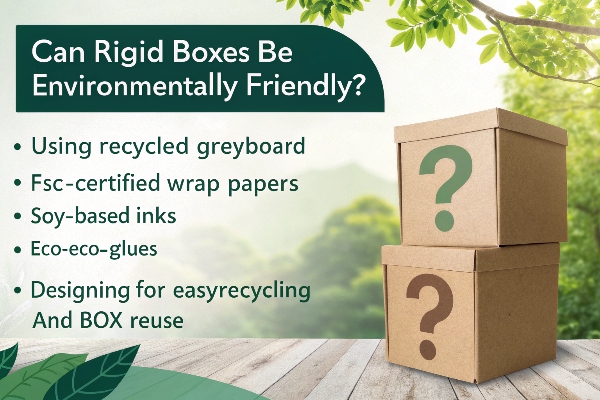
Sustainability is a big topic in packaging today, and rigid boxes are definitely part of that conversation. While they use substantial amounts of material, there are effective ways to make them greener. Efficient production processes, a focus at Kylin Machine5, also play a role by minimizing material waste and energy consumption during manufacturing.
Eco-Material Choices
The biggest impact on sustainability comes from the materials selected. Opting for greyboard with a high percentage of recycled content is a crucial starting point. Choosing wrap papers that are FSC-certified (sourced from responsibly managed forests) or made from recycled fibers also makes a significant difference. Using vegetable-based inks, like soy ink, instead of traditional petroleum-based ones, and selecting water-based or other eco-friendly adhesives further reduces the environmental impact of the finished box.
Designing for End-of-Life
Recyclability can sometimes be a challenge for rigid boxes. Components like strong glues, plastic-based laminates, embedded magnets for closures, or plastic windows can complicate the standard paper recycling process. Designing boxes using primarily paper-based materials and minimizing these non-recyclable components improves their end-of-life options. Clear labeling that instructs consumers on how to properly dispose of or recycle the box is also important.
The Power of Reuse
One inherent sustainability advantage of rigid boxes is their durability and perceived value. They are not typically seen as single-use items. Many consumers keep attractive, sturdy rigid boxes for storing keepsakes, organizing items, or regifting. This reuse significantly extends the box’s life cycle and postpones disposal. Encouraging reuse through attractive design or subtle messaging enhances their sustainability profile compared to flimsy packaging designed to be discarded immediately.
Conclusion
Modern automation, quality materials, and smart design define 2025 rigid box making. Understanding materials, costs, and sustainability helps choose the best premium packaging. Contact Kylin Machine for efficient solutions.
- Fully automatic rigid box machines from Kylin use AI camera spotting, servo control, and handle multiple steps like paper feeding, gluing, and positioning for luxury boxes. ↩ ↩ ↩ ↩ ↩ ↩ ↩
- Kylin offers automatic rigid box machinery. Source: detail of Ky-430A auto rigid box machine ↩ ↩ ↩
- The Ky-600D Rigid Box Forming Machine is suitable for gift boxes and packing boxes, handling specific size ranges. ↩ ↩ ↩
- Kylin machines are used by over 10,000 customers in 30 countries. Source: www.kylinmachines.com ↩
- Kylin Machinery Limited has strict QC management and focuses on advanced machines, technology, and service. Source: Brochure and products for foldable box machine.pdf ↩


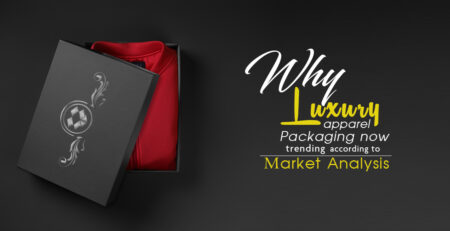

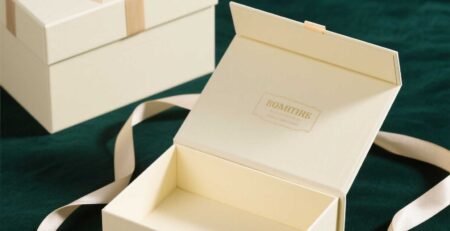
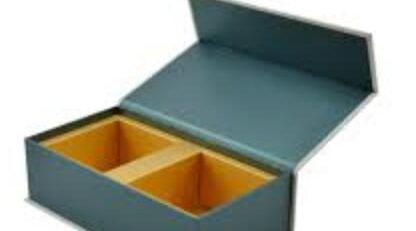

发表回复